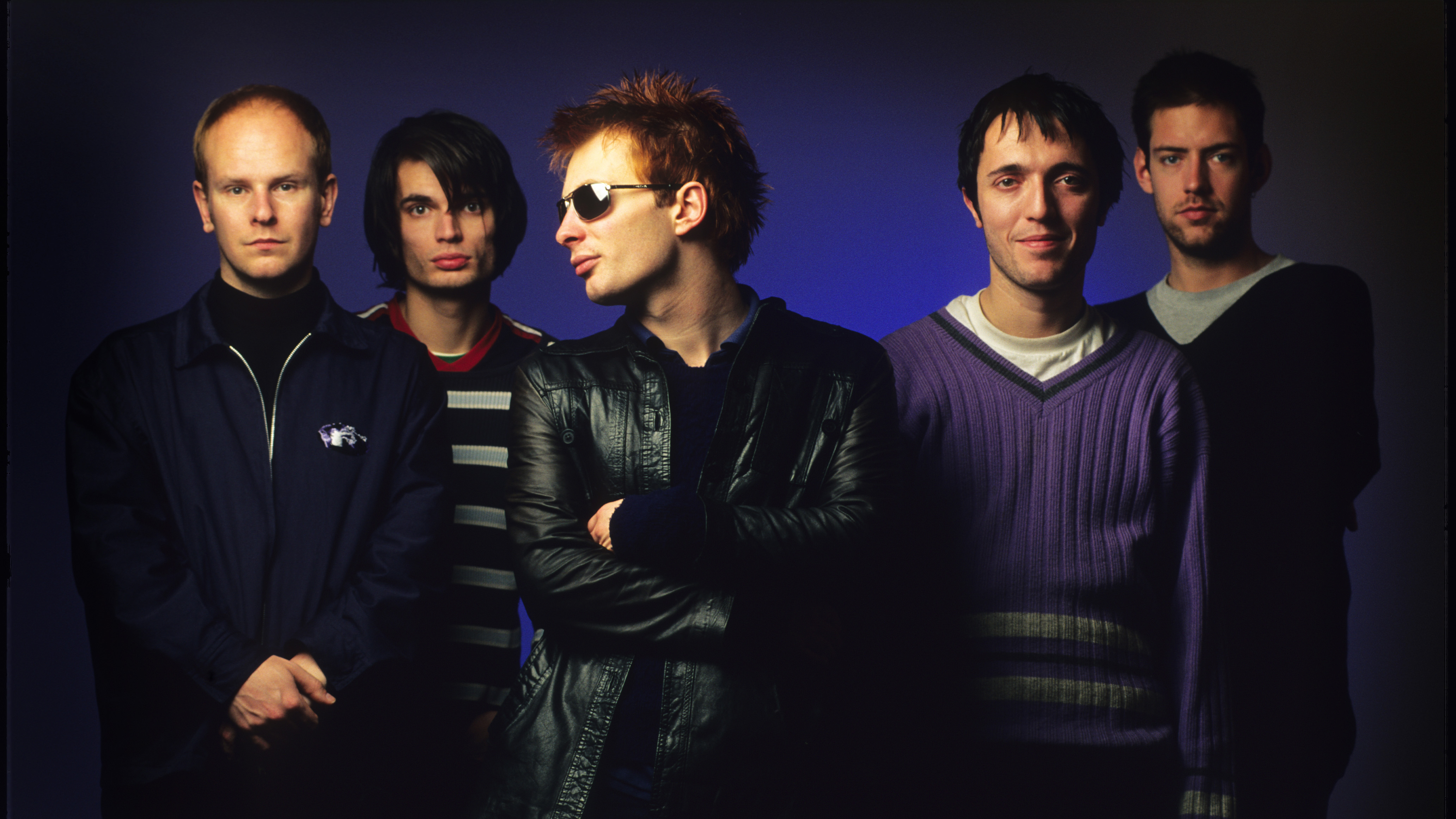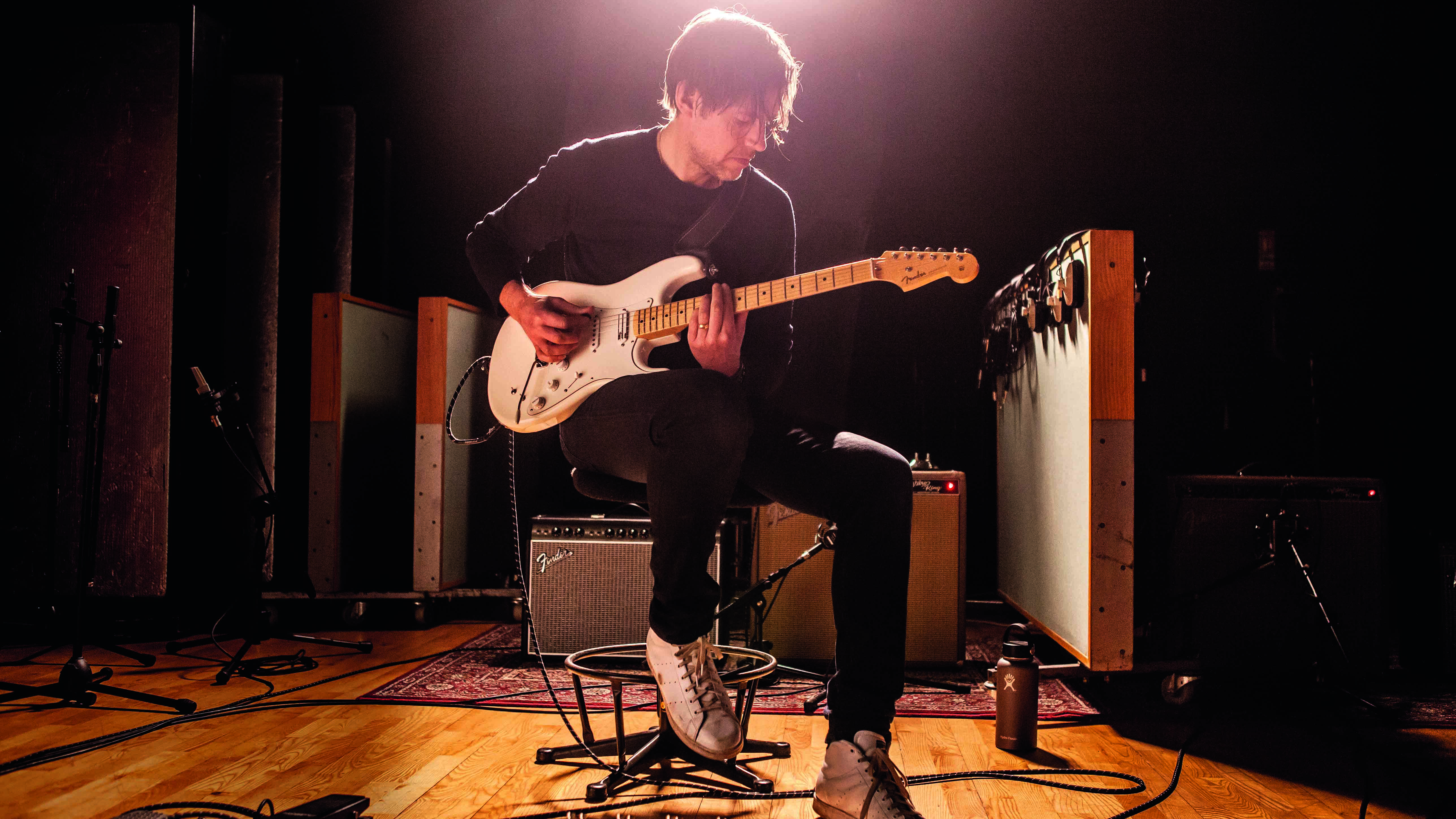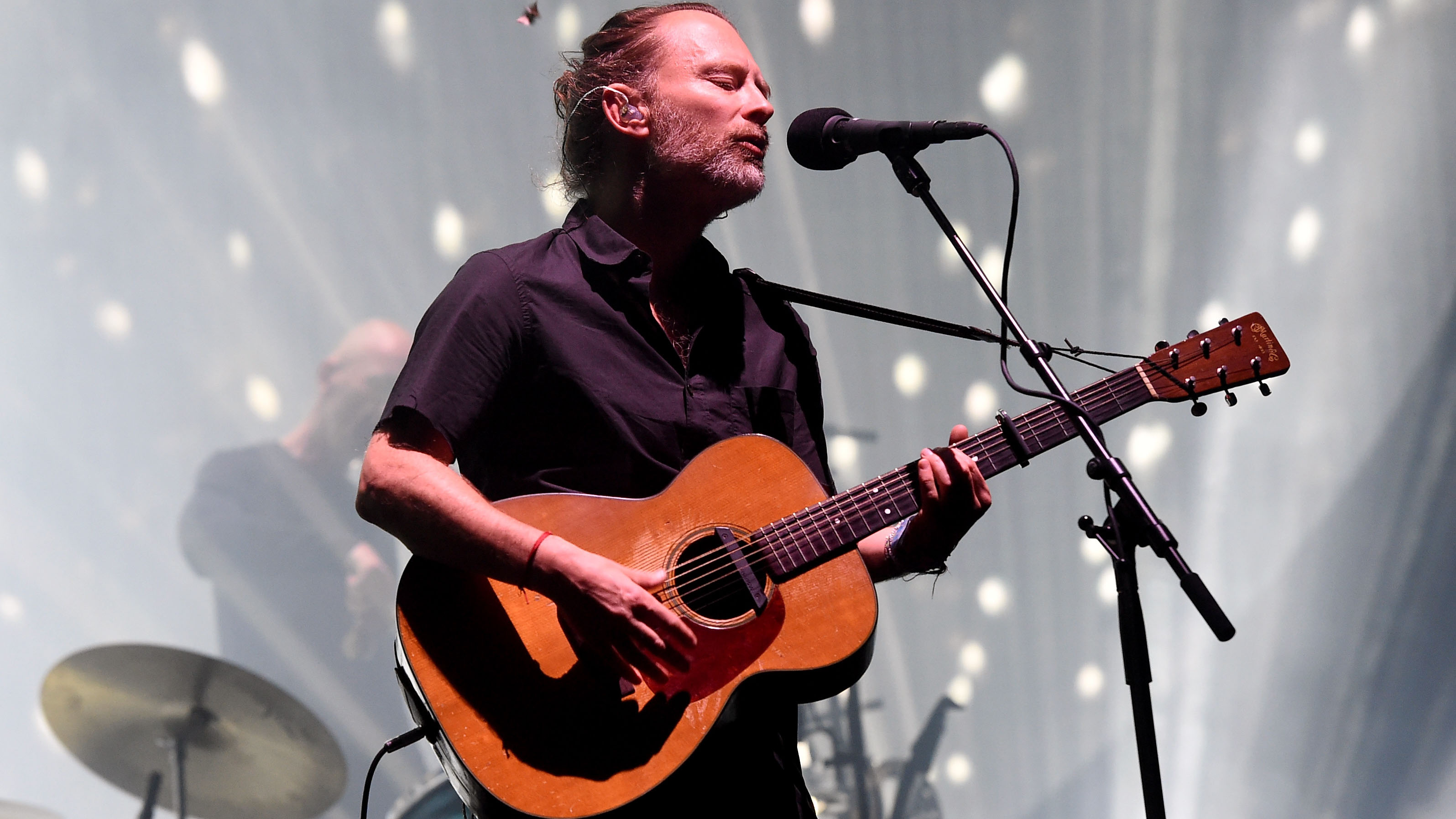“There were so many demos that sounded like major songs, but that one was near the top of the list": The making of the 1995 Radiohead classic that became one of their all-time greatest anthems
Producer John Leckie: "It sounded instantly like a big track"

When Radiohead were laying down tracks for their second long player, The Bends, throughout 1994, there was no doubting they were under pressure. The group’s record label, Parlophone, was desperate to capitalise on the mainstream radio play and consequent chart success the single Creep [taken from their debut Pablo Honey, 1993] had garnered worldwide. In retrospect, Parlophone needn’t have worried.
The Bends, finally unveiled to the world in March 1995, established Radiohead as a supreme alt-rock force that would be set on the path to global domination with 1997’s more experimental opus OK Computer.
While nearly every track on The Bends is a classic, Fake Plastic Trees (the third single taken from the UK No 4 album) is the intimate, emotionally charged centrepiece. Producer John Leckie [Stone Roses, The Verve] was personally chosen by the band to work on their sophomore release, and he recognised the song’s potential from the start.
“There was a demo of [Fake Plastic Trees] on a cassette and that’s when I first heard the track,” Leckie explained to Total Guitar magazine in 2012. “There were so many demos that sounded like major songs, but that one was near the top of the list. It sounded instantly like a big track.”
The song was laid down at London’s RAK Studios in early 1994, during an initial seven-week recording residency. While some tracks from The Bends would later be re-recorded with Leckie at The Manor and Abbey Road, after the band decided they wanted to work on alternative arrangements following a short global gigging jaunt, Fake Plastic Trees would remain as it was first captured in RAK Studio 1.
I won’t say he did it first take, but he did it second or third take
John Leckie
The atmosphere was intimate from the outset as vocalist/guitarist Thom Yorke donned his acoustic and Leckie pressed record on the tape machine.
“It was originally done with Thom just playing acoustic guitar and singing live,” Leckie remembers of that soulful first take. “I think he did it to a click in his headphones, but everything else was overdubbed later. One of the reasons for doing that was because we were recording the strings the next day.
Get the MusicRadar Newsletter
Want all the hottest music and gear news, reviews, deals, features and more, direct to your inbox? Sign up here.
“Jonny Greenwood [guitarist, keyboardist] had written some string parts for Fake Plastic Trees, (Nice Dream), and maybe another track. They wanted a cello player and I knew this girl called Caroline Lavelle who worked with a string quartet. She was coming down to record with Jonny’s friend [John Matthias] who was playing violin. Anyway, we wanted to get a track down of Fake Plastic Trees and Thom said, ‘I’ll do it now!’” Leckie was amazed by Yorke’s prodigious abilities. “I won’t say he did it first take, but he did it second or third take. The whole track dynamic was created from Thom’s original performance.”

Radiohead’s Ed O’Brien: “I was always drawn to sounds that didn’t sound like the guitar”
Leckie recorded Yorke’s acoustic with a combination of two microphones: a Shure SM57 and one Neumann U 67. However, he can’t quite recall the make of the acoustic guitar.
“It was blonde wood. It was very resonant and a bit precious to him,” says Leckie. “It was almost like a classical instrument – it wasn’t like a Martin folk guitar or anything like that.”https://www.musicradar.com/news/marshall-vintage-reissue-pedalsAs far as the overdubs go, Greenwood took an entire day to meticulously record the Hammond organ sequences phrase-by-phrase, while both Ed O’Brien [guitarist] and Greenwood both contributed parts to the electric guitar break.
“I don’t think there were many guitar effects, so I think most of it was just clean or dirty. Jonny had a Fender amp, maybe a Fender Twin, and a Marshall Bluesbreaker [Greenwood had previously used a Shredmaster on Creep]. We tried lots of different amps and stuff during the album sessions, but basically his sound was his Telecaster [Plus model], a Fender amp and his best-sounding pedal the Bluesbreaker.
"Ed’s guitars were custom made by the band’s guitar tech, Plank (who still works for them, I think). He made a red guitar that looks like a Rickenbacker and Ed used that a lot of the time.”
What I remember the most about Radiohead is that when they performed in the studio they would jump around as if they were onstage
Leckie will never forget the live feel and adrenaline the band channelled into the sessions for Fake Plastic Trees and The Bends.
“What I remember the most about Radiohead is that when they performed in the studio they would jump around as if they were onstage,” an incredulous Leckie recalls. “So when Jonny was doing an overdub his hair would be hanging forward and he’d be knocking chairs over. Thom would be the same. As soon as you pressed record, they’d all start jumping up and down. It was really good fun.”

Although Leckie produced The Bends, Parlophone drafted in American duo Sean Slade and Paul Q Kolderie (who’d produced Radiohead’s debut album Pablo Honey) to mix a few of the tracks at a late stage in proceedings. Even though Leckie was irritated initially by the move, he does admit that the end result on Fake Plastic Trees isn’t too far removed from his original monitor mix.
Looking back, his stand-out memory will always be Thom’s intense emotional vocal delivery while strumming his acoustic on that first take at RAK. “You can’t delay the emotion that Thom had playing on that track,” Leckie says. “It was right to put that in at the beginning and then have everything else built around it. You know, rather than putting it on at the end and then Thom having to accommodate all the other shit around it. To start off with something naked like that was a great way of crafting that song. It was brilliant.”
“They didn’t like Prince’s bikini underwear”: Prince’s support sets for the The Rolling Stones in 1981 are remembered as disastrous, but guitarist Dez Dickerson says that the the crowd reaction wasn’t as bad as people think
“We are so unencumbered and unbothered by these externally imposed rules or other people’s ideas for what music should be”: Blood Incantation on the making of Absolute Elsewhere and how “Data from Star Trek” saved the album – and the studio










